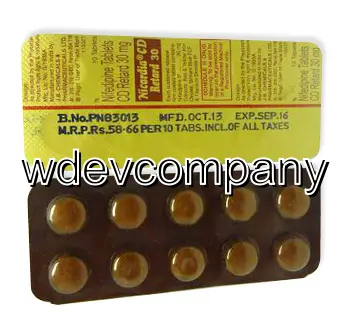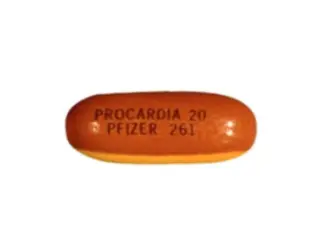| Package | Dosage | Price | Price per Dose | |
|---|---|---|---|---|
| Dosage: 10mg | ||||
| 360 pill | 10mg | $354.90 | $0.98 | |
| 180 pill | 10mg | $193.25 | $1.07 | |
| 120 pill | 10mg | $140.54 | $1.18 | |
| 90 pill | 10mg | $117.70 | $1.30 | |
| 60 pill | 10mg | $89.59 | $1.49 | |
| 30 pill | 10mg | $52.69 | $1.76 | |
| Dosage: 20mg | ||||
| 360 pill | 20mg | $423.42 | $1.18 | |
| 180 pill | 20mg | $233.66 | $1.30 | |
| 120 pill | 20mg | $175.68 | $1.46 | |
| 90 pill | 20mg | $151.08 | $1.67 | |
| 60 pill | 20mg | $114.19 | $1.92 | |
| 30 pill | 20mg | $72.02 | $2.42 | |
| Dosage: 30mg | ||||
| 180 pill | 30mg | $455.05 | $2.53 | |
| 120 pill | 30mg | $328.54 | $2.74 | |
| 90 pill | 30mg | $268.80 | $2.99 | |
| 60 pill | 30mg | $203.79 | $3.39 | |
| 30 pill | 30mg | $119.46 | $4.01 | |
| 10 pill | 30mg | $45.66 | $4.64 | |

Nifedipine Description
Overview of Nifedipine
Nifedipine is a medication primarily used to treat high blood pressure and angina, which is chest pain caused by reduced blood flow to the heart. It belongs to a class of drugs known as calcium channel blockers. By relaxing the blood vessels, Nifedipine helps improve blood flow and reduce the workload on the heart. This medication is available in various formulations, including immediate-release tablets, extended-release tablets, and capsules, allowing for flexible dosing tailored to individual patient needs.
How Nifedipine Works
The main mechanism of Nifedipine involves blocking calcium ions from entering the smooth muscle cells of the heart and blood vessels. Calcium ions are essential for muscle contraction, and their blockade results in vasodilation, which leads to lowered blood pressure. As a result, Nifedipine effectively reduces the oxygen demand of the heart and alleviates chest pain. Its rapid onset makes it useful for quick relief in certain cases, while extended formulations provide a steady control of blood pressure over time. It is often prescribed as part of a comprehensive approach to managing hypertension and ischemic heart disease.
Potential Benefits
Patients taking Nifedipine often experience significant improvements in symptoms related to hypertension and angina. By lowering blood pressure, it helps decrease the risk of stroke, heart attack, and other cardiovascular complications. For those with angina, Nifedipine reduces the frequency and severity of chest pain episodes. Its ability to promote vasodilation can also improve overall blood circulation. Many users report better quality of life because of more stable blood pressure levels and fewer angina attacks. The medication's flexibility in dosing and formulations can also be advantageous for personalized treatment plans.
Possible Side Effects
While Nifedipine is generally well tolerated, some users may encounter side effects. Common adverse reactions include headache, flushing, dizziness, and swelling of the ankles and feet. These are usually mild and tend to diminish with continued use. Less frequently, some individuals may experience a rapid heartbeat, nausea, or gastrointestinal discomfort. In rare cases, allergic reactions such as rash or difficulty breathing may occur. It is important for patients to report any unusual or severe effects to their healthcare provider promptly. Proper monitoring and dose adjustments can help minimize side effects and optimize treatment outcomes.
Precautions and Interactions
Patients should inform their doctor about any pre-existing conditions, especially heart issues, liver problems, or allergies, before starting Nifedipine. Caution is advised when combining it with other medications, particularly other blood pressure drugs, to prevent excessive lowering of blood pressure. Drugs like beta-blockers or certain antifungal medications can interact with Nifedipine, affecting its efficacy or increasing side effects. Pregnant and breastfeeding women should consult their healthcare provider to assess the safety of using this medication during their condition. Regular check-ups are important to monitor blood pressure and ensure the medication's effectiveness.
Usage Guidelines
It is essential to follow the dosing instructions provided by a healthcare professional. Typically, Nifedipine is taken orally, with or without food. The immediate-release forms are usually taken multiple times a day, while extended-release tablets are taken once daily. Patients should not change their dosage or stop medication without medical approval. Because of its vasodilatory effects, sudden discontinuation can cause a rebound increase in blood pressure, so tapering under medical supervision is recommended. Adherence to prescribed treatment is key to achieving optimal management of hypertension and angina.

